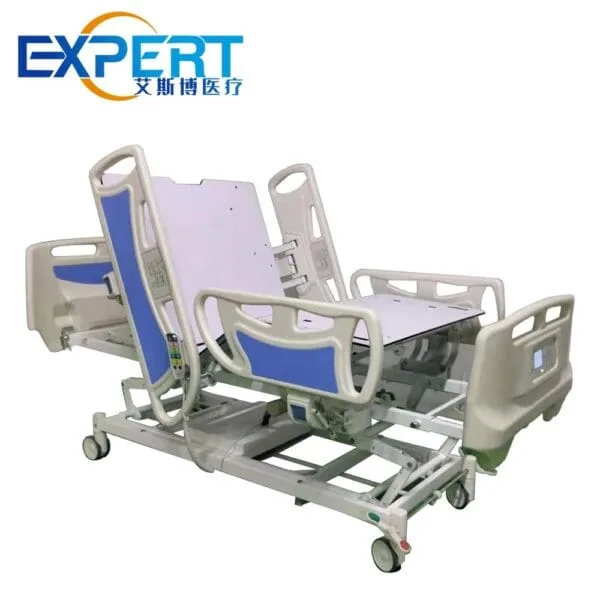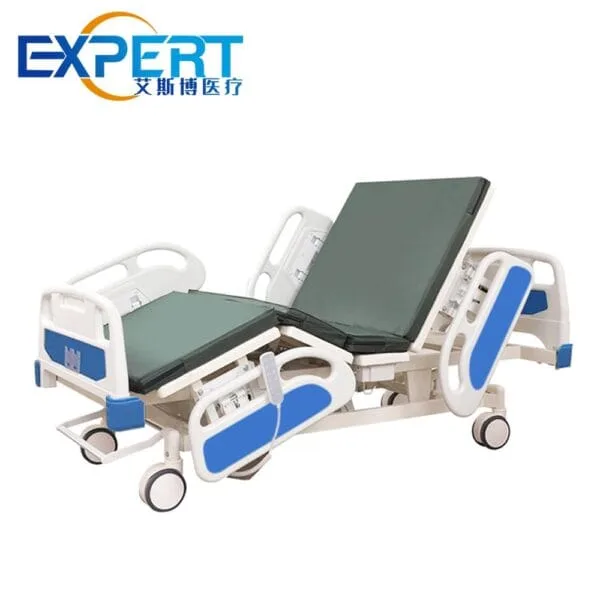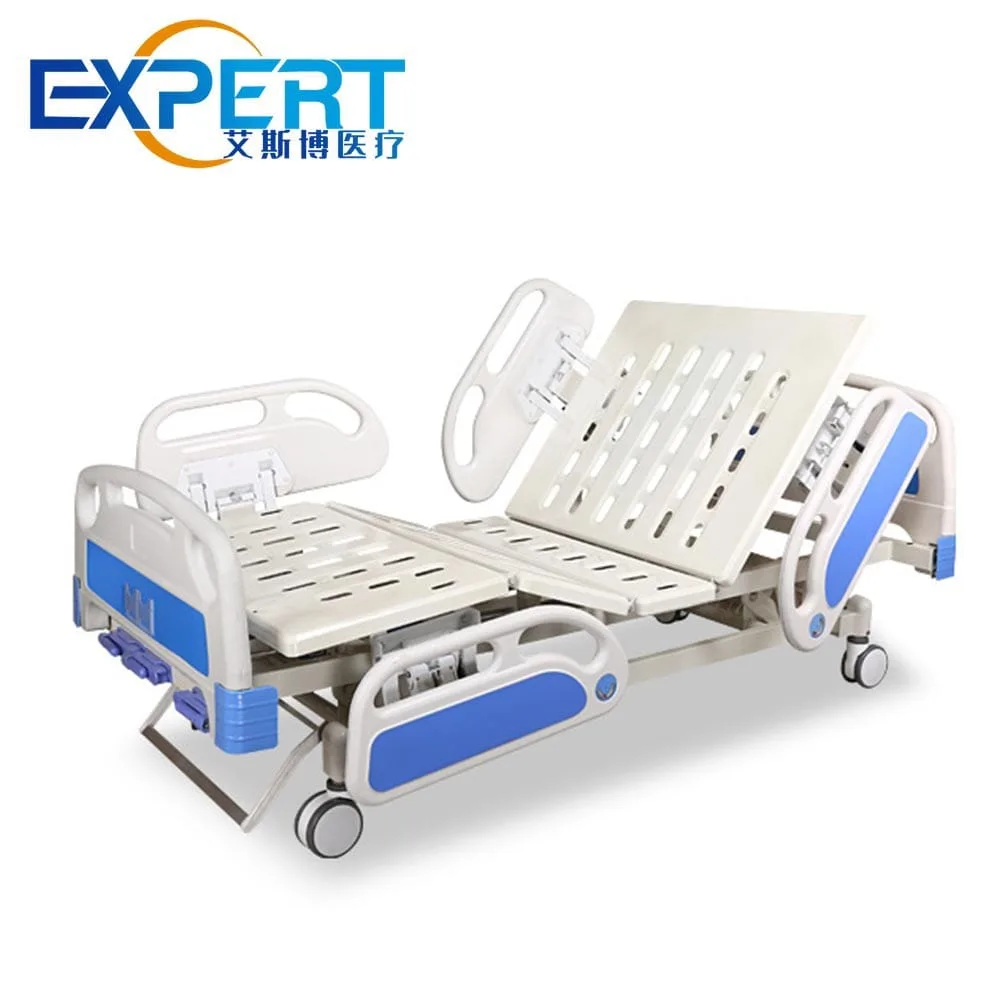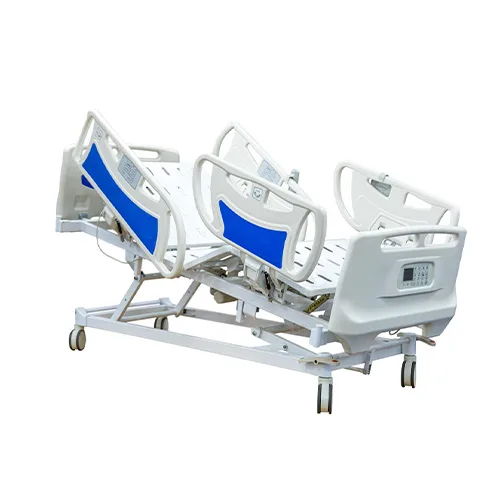Address
304 North Cardinal St.
Dorchester Center, MA 02124
Work Hours
Monday to Friday: 7AM - 7PM
Weekend: 10AM - 5PM
Address
304 North Cardinal St.
Dorchester Center, MA 02124
Work Hours
Monday to Friday: 7AM - 7PM
Weekend: 10AM - 5PM

Understanding the various types of hospital beds and their specific features can significantly impact the quality of life and recovery process.
Welcome to My Blog!
Before we dive into the content, I’d love for you to join me on my social media platforms where I share more insights, engage with the community, and post updates. Here’s how you can connect with me:
Facebook:https://www.facebook.com/profile.php?id=100071234835011
LinkedIn:https://www.linkedin.com/company/74943205/admin/dashboard/
YouTube:www.youtube.com/@shandongexpertmedicalequip4695
TikTok:www.tiktok.com/@expertmedical
Now, let’s get started on our journey together. I hope you find the content here insightful, engaging, and valuable.

When it comes to providing optimal care and comfort, especially for individuals with health challenges or those requiring long-term care, the choice of a hospital bed is paramount. Understanding the various types of hospital beds and their specific features can significantly impact the quality of life and recovery process. In this comprehensive guide, we’ll explore the diverse range of types of hospital beds, their functionalities, and the factors to consider when selecting the right one. This detailed exploration is to assist those in need of types of hospital beds.
The foundational types of hospital beds generally fall into two categories: manual and electric. Manual hospital beds are operated by hand cranks, requiring manual adjustments for positioning. Electric hospital beds, on the other hand, utilize motors for effortless adjustments, providing greater ease and convenience for both patients and caregivers.
Manual types of hospital beds are typically more affordable and simpler in design. They are suitable for individuals who require basic positioning adjustments and do not necessitate frequent changes. The manual cranks allow for adjustments in the head and foot sections.
Electric types of hospital beds offer advanced features such as remote-controlled adjustments for height, head, and foot positioning. These beds are ideal for patients who require frequent adjustments or have limited mobility. The electric motors provide smooth and precise movements, enhancing comfort and independence.


Beyond the basic categories, several specialized types of hospital beds cater to specific medical conditions and care requirements.
Low air loss types of hospital beds are designed to prevent and treat pressure ulcers by circulating air through specialized mattresses. This feature helps to redistribute pressure and minimize skin breakdown, particularly beneficial for patients with limited mobility.
Bariatric types of hospital beds are built to support heavier patients, offering wider and stronger frames. These beds are designed to ensure comfort and safety for individuals with obesity, providing enhanced support and stability.
Trendelenburg types of hospital beds allow for tilting the entire bed surface, with the head lowered and the feet elevated. This positioning is often used for specific medical procedures and to improve circulation in certain conditions.
Rotating types of hospital beds are designed to rotate the patient from side to side, aiding in pulmonary hygiene and preventing complications such as pneumonia. These beds are particularly useful for patients with respiratory issues or those requiring prolonged bed rest.
Selecting the right types of hospital beds involves considering several key features to ensure optimal comfort, safety, and functionality.
| Bed Type | Key Features | Primary Use |
|---|---|---|
| Manual Hospital Bed | Manual crank adjustments, basic positioning | Basic care, cost-effective |
| Electric Hospital Bed | Remote-controlled adjustments, height adjustment | Enhanced comfort, frequent adjustments |
| Low Air Loss Bed | Air circulation mattress, pressure ulcer prevention | Pressure ulcer prevention, limited mobility |
| Bariatric Bed | Wider and stronger frame, high weight capacity | Obesity care, enhanced support |
| Trendelenburg Bed | Tilting bed surface, head down and feet up | Medical procedures, improved circulation |
| Rotating Bed | Side-to-side rotation, pulmonary hygiene | Respiratory care, prolonged bed rest |
The mattress is a critical component of any hospital bed, significantly influencing patient comfort and well-being. Different types of mattresses cater to specific needs and conditions.
Foam mattresses provide basic comfort and support, suitable for patients who do not require specialized pressure relief. They are cost-effective and readily available.
Innerspring mattresses offer traditional support and durability, suitable for patients who prefer a firmer sleeping surface. They are widely used in hospital settings.
Low air loss mattresses are designed to prevent pressure ulcers by circulating air and redistributing pressure. They are ideal for patients with limited mobility or at risk of skin breakdown.
Alternating pressure mattresses use air cells to inflate and deflate, providing dynamic pressure management and preventing prolonged pressure on any single area. They are beneficial for patients with severe mobility limitations.
Patient safety is paramount when using types of hospital beds. Several safety features and considerations can help prevent accidents and injuries.
Side rails are essential for preventing falls and providing support for patients when repositioning. They should be securely attached and easily adjustable.
Locking casters ensure stability and prevent unintended bed movement, particularly during patient transfers or medical procedures.
Adjusting the bed height to a comfortable and safe level facilitates easy and safe patient transfers, minimizing the risk of falls and injuries.
Regular maintenance, including checking for loose parts and ensuring proper functionality of the motors and controls, is crucial for maintaining the bed’s safety and performance.

Types of hospital beds play a significant role in enhancing patient comfort and independence, improving their overall quality of life.
Adjustable positioning allows patients to find comfortable positions, reducing discomfort and promoting relaxation.
Easy access and egress, facilitated by adjustable bed height and side rails, enable patients to move in and out of bed with greater ease and independence.
Enhanced mobility, provided by casters and maneuverability, allows patients to move around their rooms and participate in daily activities more easily.
Choosing the right types of hospital beds is essential for providing optimal care and comfort. By understanding the various types of beds, their functionalities, and the key features to consider, you can make an informed decision that meets the specific needs of your patient or loved one. From manual to electric, and from low air loss to bariatric, each bed type offers unique benefits and advantages. To find the perfect bed to fit your needs, do not hesitate to contact us today.
Q: What is the difference between manual and electric types of hospital beds?
A: Manual beds are adjusted with hand cranks, while electric beds use motors for remote-controlled adjustments.
Q: What are low air loss types of hospital beds used for?
A: Low air loss beds are used to prevent and treat pressure ulcers by circulating air through the mattress.
Q: What are bariatric types of hospital beds?
A: Bariatric beds are designed to accommodate larger patients, offering wider and stronger frames.